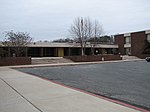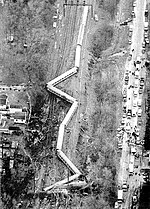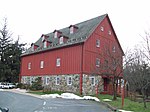Gunpowder River
Rivers of Baltimore County, MarylandRivers of Harford County, MarylandRivers of MarylandRivers of PennsylvaniaRivers of York County, Pennsylvania ... and 1 more
Tributaries of the Chesapeake Bay

The Gunpowder River is a 6.8-mile-long (10.9 km) tidal inlet on the western side of Chesapeake Bay in Maryland, United States. It is formed by the joining of two freshwater rivers, Gunpowder Falls (often referred to locally as "Big Gunpowder Falls") and Little Gunpowder Falls.
Excerpt from the Wikipedia article Gunpowder River (License: CC BY-SA 3.0, Authors, Images).Gunpowder River
Old Church Drive,
Geographical coordinates (GPS) Address Nearby Places Show on map
Geographical coordinates (GPS)
| Latitude | Longitude |
|---|---|
| N 39.4022 ° | E -76.3649 ° |
Address
Old Church Drive
Old Church Drive
21085
Maryland, United States
Open on Google Maps



